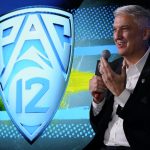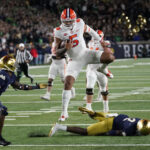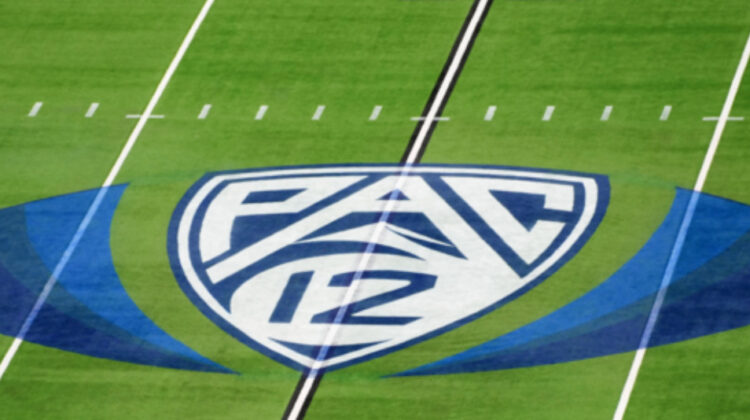The dates of the 2023 conference games haven’t been finalized, but the opponents for each team are known. Do you agree that Utah has the toughest out-of-conference schedule and Oregon has the toughest in-conference schedule? — Jon Joseph
Sure, you could make a case for Utah, which plays Florida at home, Baylor on the road and Weber State. Anytime two of the three opponents are Power Five programs; the challenge is substantial.
But Colorado typically plays one of the toughest non-conference lineups, and 2023 is no exception. The Buffaloes open on the road against TCU, then host Nebraska and also play Colorado State.
Granted, Weber State is a quality FCS program. But the Hotline would prefer to face Utah’s trio of opponents.
And let’s not discount Washington’s schedule. The Huskies visit Michigan State, and they host Boise State, which should have a top-25 team, and Tulsa.
When the weakest opponent (purportedly) is a five-win team from the American, there are no cupcakes.
And yes, the conference schedule rotation for 2023 is set. In fact, the Hotline published all the schedules (in cross-division format) a few years ago.
Oregon plays everyone in the old North division, plus USC (home) and Utah (road).
But I’d argue the toughest intra-conference lineup belongs to Cal, which is set to face not only the Northwest schools but also USC, Utah and UCLA, plus Colorado.
Oh, and the Bears play Auburn, as well.
Do you think mass roster overhauls each year at the “big brand” schools is sustainable, or will the approach to player development at Utah and Oregon State be the winning formula in the future? You can’t buy culture and identity in my opinion. — @DrBTru
You most definitely cannot, and the model at work in Corvallis and Salt Lake City is humming for those programs.
The massive roster turnover that we have seen at Arizona, ASU, USC and Colorado (to name four) isn’t sustainable; nor is it necessarily intended to be.
The process works well for new coaching staffs and allows for rapid recovery. But in most cases, transfers eventually will be used to supplement the roster, not define it.
Remember, the supply chain remains clogged — and will, for two more years — because of the free season of eligibility resulting from COVID.
Do you see a scenario where name, image and likeness (NIL) collectives enter into contractual agreements with the players? For example, a player commits to a school for two years for X amount but has to pay it back if he leaves early. — @cubsfan7331
That situation already exists. Players are signing NIL contracts all the time.
At some point, the NIL market will settle. After all, the boosters supplying the cash have fat wallets for a reason: They are smart businessmen and businesswomen who aren’t likely to continue writing five-figure checks for backup guards.
NIL will continue to be used (improperly) as a recruiting inducement, but with the cash and contracts focused on the high-value positions. In fact, that process is already underway in the shadows.
Now that commissioner Kevin Warren is leaving the Big Ten, do you still think USC and UCLA will make the jump? — @MsMichelleYoung
What do you think the chances are of either the L.A. schools having buyer’s remorse in a few years and wanting to come back to the Pac-12? — @LondonUte
The L.A. schools are gone, regardless of Warren’s departure to the Bears and regardless of the Big Ten’s choice to succeed him.
They are entering the conference on Aug. 2, 2024 no matter what.
But buyer’s remorse is a distinct possibility, in our opinion, particularly for UCLA. The Bruins aren’t equipped financially to thrive in their early years in the Big Ten. They are entering the conference, as Maryland and Rutgers once did, with a mountain of debt.
The expected cash windfall from Big Ten media rights likely will be used to eat away at UCLA’s debt, for which the athletic department is fully responsible.
Meanwhile, the competition (USC, Michigan, Ohio State, etc.) will be reinvesting its cash.
We foresee the Bruins falling behind immediately and struggling to catch up. By the late 2020s, there could be a load of disgruntled UCLA fans.
Could the Pac-12 sign a non-conference game package with UCLA and USC to play one game each year? This will assure two games against an L.A. team every year, help the media rights negotiations and keep the Pac-12 in the L.A. market. — Jack Sunabe
The issue here is timing: The Pac-12’s media negotiations are closer to the end than the beginning (presumably), which doesn’t carve much space for the crafting of a formal scheduling partnership.
However, I suspect the Bruins and Trojans will make an attempt to continue playing Cal and Stanford as often as possible.
The last thing either L.A. school wants is a heavy load of travel for non-conference games.
What’s the likelihood that any new schools rumored to be potential additions in the Pac-12 — be it San Diego State, Fresno State, SMU or some other program — get announced before the start of next season? — @aka_branderson
How about the Pac-12 pulling a surprise move and offering San Diego State and locking up the Dallas-Fort Worth metro area by getting SMU and TCU? — @RockDawg3
If the Pac-12 expands — and that’s hardly a guarantee — then a decision will come well before the start of the 2023 season. I expect the issue to be resolved this spring, in fact.
TCU certainly would make sense as a partner for SMU if the Pac-12 desires a foothold in Texas, but it’s an unlikely outcome.
If the Big 12 schools have signed the grant-of-rights agreement that accompanies the renewal of their contract with ESPN and Fox, nobody is going anywhere. They are all locked into the conference until 2031.
If the grant-of-rights contract remains unsigned — a distinct possibility given that the conference hasn’t formally announced the new media deal — then any outcome is possible, however remote it appears.
If the Pac-12 goes back to divisions, do Washington fans have the right to be absolutely livid at this one year dumpster fire set of rules? — @LocustAutoX
Nope, because 1) it’s a multi-year change that could very well be permanent, and 2) the elimination of division was approved by all the schools.
Instead of being livid at the conference, UW fans should be frustrated that the Huskies lost to Arizona State.
Win that game, and they would have played for the conference title.
Do you think the NCAA denying the Pac-12’s request to move the Colorado-Arizona State game to Week Zero had more to do with rival conferences (and networks) wanting to protect their own Week Zero games? — @em_buff
My sense is the decision was based on the NCAA not wanting to set a precedent that would allow dozens of teams to justify playing on Week Zero every season.
In our view, the NCAA should move the football calendar up one week, because it would create flexibility during the fall for a second bye.
Will that ever happen? The schedule for the expanded playoff, with opening-round games in the middle of December, could impact decisions with the calendar.
When is the Pac-12’s 2023 schedule expected to be announced? — @rreid32
I don’t have a firm date but anticipate a release in the next 10 days or two weeks.
If Denver fans/media are right and former Stanford coach David Shaw is interviewing to be Jim Harbaugh’s offensive coordinator with the Broncos, what TV show would this reunion most resemble? — @WorkishFromHome
There would be plenty of material for Divorce Court.
Does Cal’s new apparel deal with Nike get the Bears out of athletic budget hell? — @SirCharles_OG
I haven’t seen the contract or heard a whisper number on the cash component, but it’s unlikely to be substantial — certainly not close to the $3.5 million in cash the Bears were supposed to receive annually from Under Armour.
And regardless of the value, the deal won’t have a major impact on Cal’s financial situation.
Between the enormous scope (i.e., cost) of the athletic program and the stadium debt service payments, the Bears are deep, deep in the red.
Which Pac-12 men’s hoops coaches are on the hot seat? — @MarcSheehan006
Cal’s Mark Fox, Stanford’s Jerod Haase, and Washington’s Mike Hopkins are atop our list. There’s a better chance of all three getting cut loose than none of them.
Given ASU’s resurgence, we’ll assume Bobby Hurley is safe. And although Wayne Tinkle’s situation at Oregon State seems tenuous, he has a relatively new contract.
That said, we could see a retirement, or someone could leave the Pac-12 for a better job — in some form or fashion, it will be a busy spring.
Related posts:

(AP Photo/Ralph Freso, File)
College Football Playoff expansion to begin in 2024 after Rose Bowl relents: Early start a boost for the Pac-12
(AP Photo/Marcio Jose Sanchez)
Pac-12 media rights negotiations: Waiting for UCLA, and welcoming Deion Sanders The Pac-12 top 10: Key storylines from a wild week of staff hires, player departures, AD tweets
The Pac-12 top 10: Key storylines from a wild week of staff hires, player departures, AD tweets

Clemson quarterback DJ Uiagalelei (AP Photo/Charles Rex Arbogast)
Pac-12 football: 2023 should be the Year of the QB as Oregon State adds an intriguing talent
